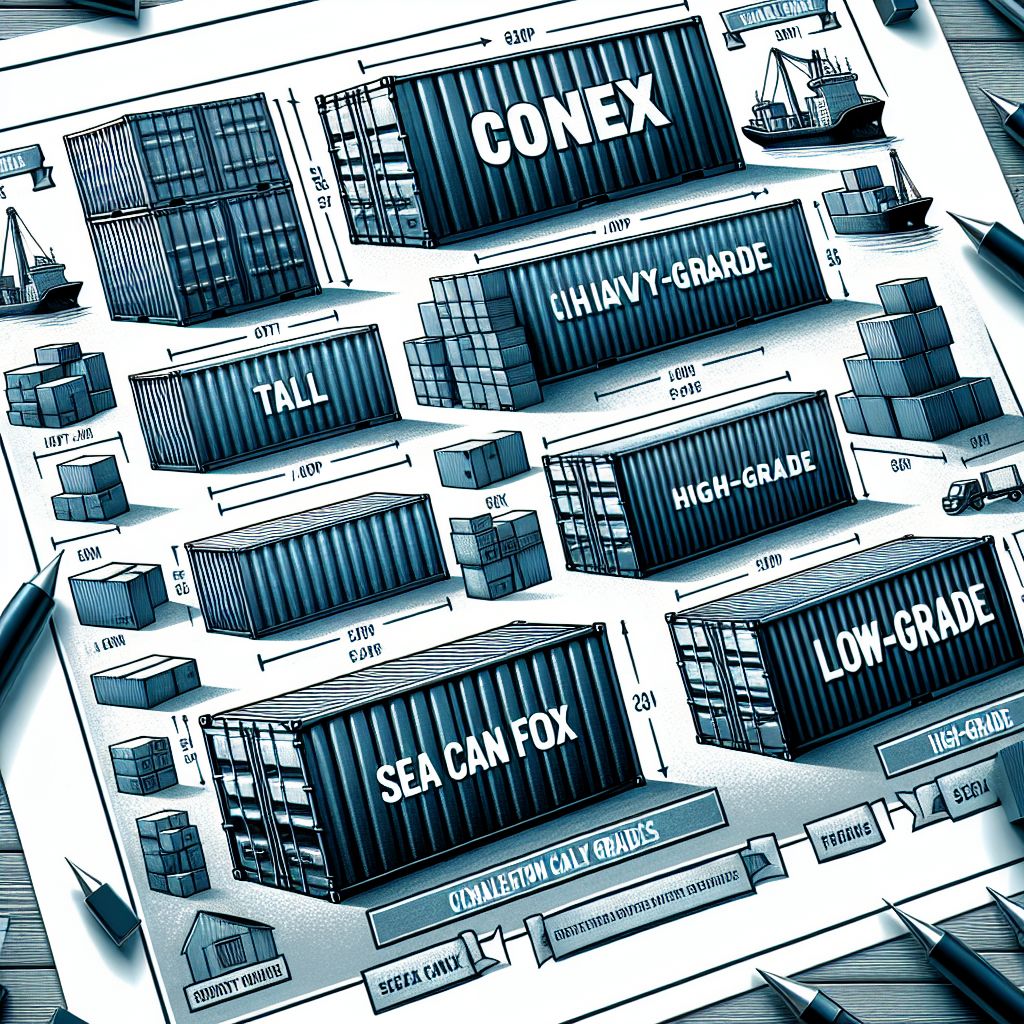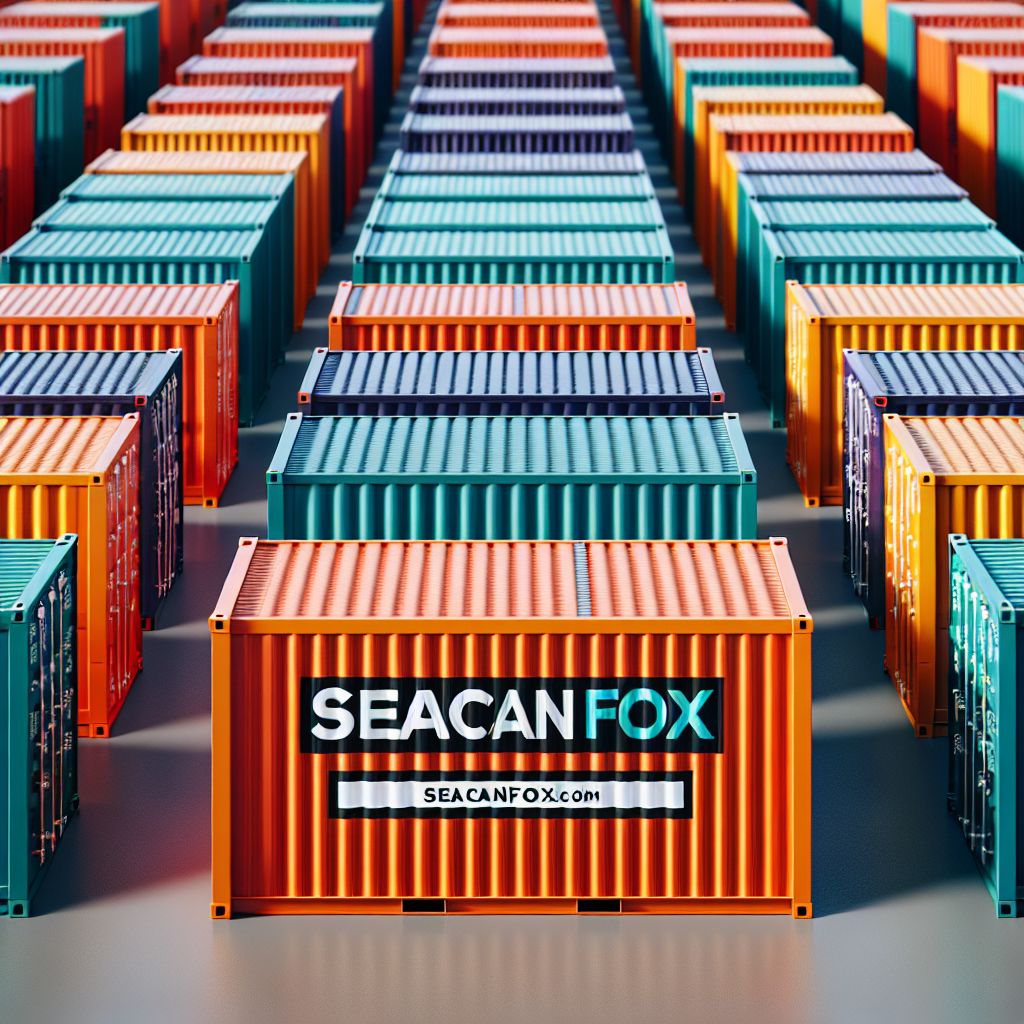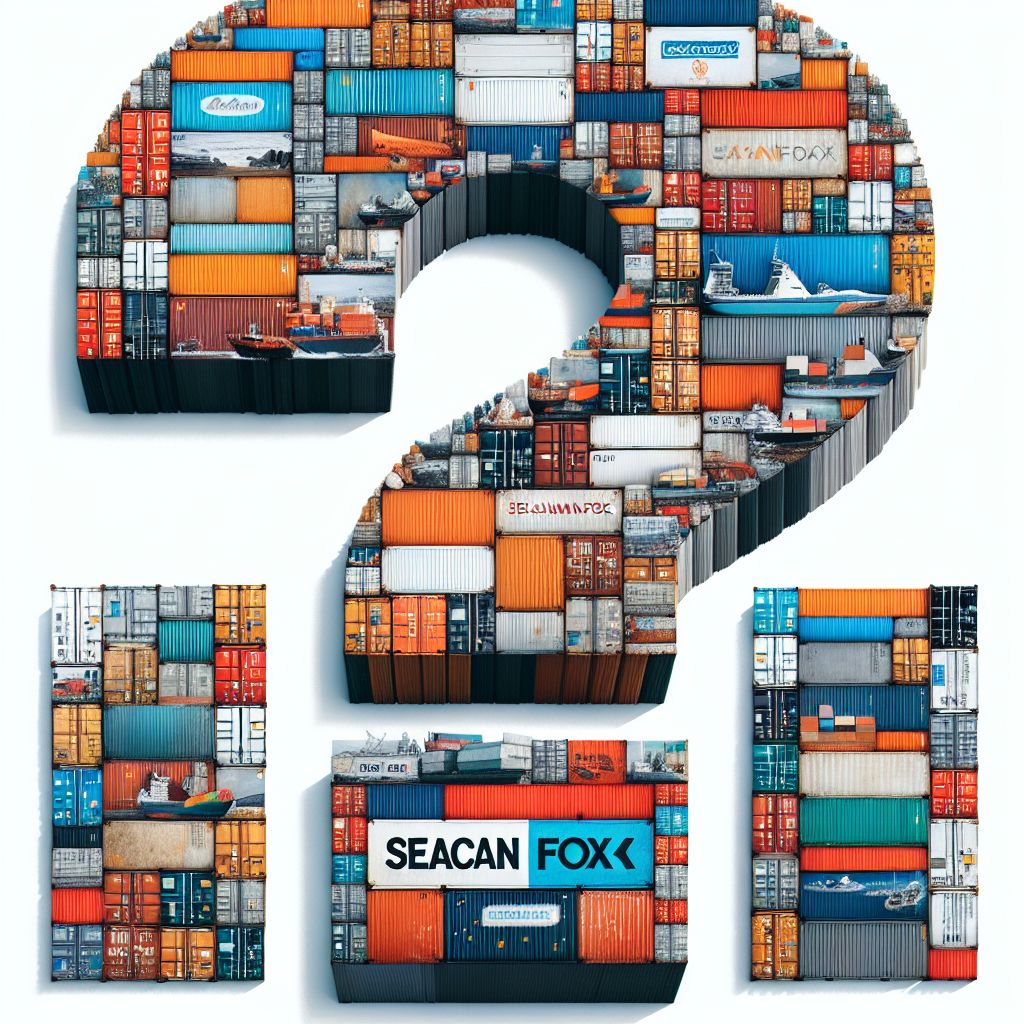
Key Takeaways
- A Conex box, commonly known as a shipping container, comes in standard sizes of 10, 20, and 40 feet in length.
- The internal dimensions are crucial for maximizing space and determining what can fit inside.
- Volume and weight capacity are key metrics that affect how much can be transported in a Conex box.
- Prices for Conex boxes vary based on size, condition, and market factors, with a range usually between $1,500 and $5,000 for standard sizes.
- Understanding the specifics of Conex box dimensions and capacity is essential for efficient logistics planning and cost management.
Unlocking the Basics of Conex Boxes
What Is a Conex Box?
Imagine a giant Lego block, but instead of plastic, it’s made of robust corrugated steel, designed to protect and transport an array of goods. That’s a Conex box for you. Originally developed for the military to ship supplies efficiently, these standardized containers have revolutionized the cargo industry. They’re watertight, weather-resistant, and built to last, making them a top choice for secure storage and transportation.
Why Conex Boxes are Essential in Logistics
Here’s the deal: without Conex boxes, international trade wouldn’t be as fast or as reliable as it is today. They allow for seamless transfer from ship to rail to truck, without unloading and reloading the cargo. This means quicker delivery times, less labor, and reduced risk of damage or theft. In short, Conex boxes are the backbone of modern logistics.
My Favorite Container Homes Resource
I compared the top 3 Container Home Guides
to discover the ultimate resource!
See my top recommendation here
Understanding Conex Box Dimensions
Comparing Common Conex Box Sizes
Size matters, especially when you’re calculating shipping costs or figuring out storage solutions. Conex boxes typically come in three lengths: 10, 20, and 40 feet. The standard height is 8 feet 6 inches, with high-cube versions reaching 9 feet 6 inches tall. But remember, it’s not just the external dimensions that count. The internal dimensions are what tell you how much you can actually fit inside.
On Measuring Conex Box Internal Space
Think of a Conex box like a chocolate box. It’s not just about the size of the box, but how much chocolate you can fit inside. Similarly, the internal dimensions of a Conex box determine the usable space for your goods. It’s the difference between squeezing in your cargo and having to leave some behind. So always check the internal dimensions before you plan your load.
Usable Capacity vs Total Volume
When we talk about capacity, we’re referring to the amount of space available inside the Conex box for your goods. The total volume is the maximum space without considering packaging, loading equipment, or the shape of your items. Usable capacity, on the other hand, is the space you can actually use effectively. It’s crucial to factor in the need for packing materials and the shape of your goods to estimate how much usable capacity you have. In other words, if the total volume is like the total square footage of a house, the usable capacity is the part of that space where you can actually live and move around comfortably.
Navigating Conex Box Prices
Now, let’s talk money. The price of a Conex box is influenced by several factors, from its size to its condition. Whether you’re buying new or used, or even renting, prices can fluctuate. The trick is to understand the market and know when and where to invest your money.
Most importantly, keep in mind that while purchasing a Conex box outright can be a significant upfront cost, it might save you money in the long run, especially if you plan on using it multiple times. Renting can be cost-effective for short-term use, but always calculate the total rental cost for the duration you need it to make sure it’s worth it.
Factors Influencing Conex Box Pricing
Several factors can affect the price of a Conex box. First, the size of the container will have a direct impact on the cost. Larger containers naturally tend to be more expensive due to the greater amount of material and space. Second, the condition of the container is critical. New containers, which might have only made one trip, are pricier than used ones that have been around the block a few times. Lastly, location plays a part. Shipping containers are plentiful in port cities, which can reduce their cost, while scarcity in landlocked areas can drive up prices.
Therefore, it’s essential to consider these factors and how they align with your budget and requirements. Sometimes, a used container with a few dings and scratches will serve your purpose just as well as a brand-new one, at a fraction of the cost.
Besides that, seasonal demand can also influence prices. When demand is high, prices go up, and vice versa. It’s a simple case of supply and demand. So, planning your purchase or rental during off-peak times could save you a bundle.
- Size of the container
- Condition: new, used, or refurbished
- Location and availability
- Seasonal demand
- Shipping costs (if the container needs to be transported to you)

Price Ranges for Common Conex Box Sizes
As a rough guide, a standard 20-foot Conex box can cost anywhere from $1,500 to $3,000 if you’re buying used. New ones can go for $3,000 to $5,000. If you’re looking for something smaller, a 10-foot container might be in the range of $1,000 to $2,500. And for those big 40-footers, prices can vary widely, but you’re looking at about $2,500 to $4,500 for a used one and up to $7,500 for a new container.
Remember, these are ballpark figures. The actual price you’ll pay can be affected by the factors we discussed earlier. It’s always a good idea to shop around and get quotes from multiple suppliers before making a decision.
Choosing the Right Conex Box
So, you’re in the market for a Conex box. The first step is to define what you need it for. Is it for shipping goods across the country, or do you need a durable, weatherproof storage solution? Your intended use will dictate the size and features you should look for.
Next, consider the size. The dimensions of the Conex box you choose should be based on the size and volume of the goods you’re transporting or storing. Don’t forget to account for any extra space you might need for packing materials or internal movement.
Assessing Your Storage Needs
Before you make a decision, take a good look at what you’re planning to store or ship. Measure your items and calculate the total volume they’ll occupy. This will help you determine the size of the Conex box you need. Also, think about the future. Are your storage needs likely to increase? If so, it might be worth investing in a larger container now to avoid having to upgrade later.
Conex Box Features and Add-Ons
Conex boxes come with a variety of features and possible add-ons that can make them even more versatile. Options like doors on both ends, built-in shelving, and climate control can turn a standard box into a tailored solution for your needs. Always consider these options when evaluating which Conex box to choose.
Conex Box Details:
| Size | Uses | Benefits | Capacity | Approx. Price (USD) | Internal Dimensions (L x W x H) | Door Opening (W x H) | Max Payload |
|---|---|---|---|---|---|---|---|
| 10-foot Standard | Small-scale storage, mobile offices, temporary sites | Compact, fits in tight spaces, easy to relocate | 560 cu ft (15.9 m³) | $1,000 – $2,500 | 9’4″ x 7’8″ x 7’10” (2.84m x 2.34m x 2.39m) | 7’8″ x 7’5″ (2.34m x 2.26m) | 21,700 lbs (9,842 kg) |
| 20-foot Standard | Storage, construction sites, temporary offices, shops | Versatile, easy to transport, weather-resistant, secure | 1,172 cu ft (33.2 m³) | $1,500 – $3,000 | 19’4″ x 7’8″ x 7’10” (5.89m x 2.34m x 2.39m) | 7’8″ x 7’5″ (2.34m x 2.26m) | 47,900 lbs (21,727 kg) |
| 20-foot Reefer | Refrigerated transport, perishable goods storage | Temperature control, suitable for smaller shipments | 953 cu ft (27 m³) | $4,000 – $7,000 | 17’8″ x 7’5″ x 7’0″ (5.45m x 2.29m x 2.16m) | 7’5″ x 7’3″ (2.29m x 2.21m) | 60,627 lbs (27,500 kg) |
| 40-foot Standard | Larger storage needs, pop-up shops, workshops, events | More space, cost-effective per cubic foot, versatile use | 2,389 cu ft (67.7 m³) | $2,000 – $4,500 | 39’5″ x 7’8″ x 7’10” (12.01m x 2.34m x 2.39m) | 7’8″ x 7’5″ (2.34m x 2.26m) | 58,600 lbs (26,580 kg) |
| 40-foot High Cube | Tall item storage, living spaces, retail, art galleries | Extra height, ideal for conversion projects, more volume | 2,694 cu ft (76.3 m³) | $2,500 – $5,000 | 39’5″ x 7’8″ x 8’10” (12.01m x 2.34m x 2.69m) | 7’8″ x 8’5″ (2.34m x 2.57m) | 58,600 lbs (26,580 kg) |
| 40-foot High Cube Reefer | Large-scale refrigerated transport, cold storage | High capacity temperature-controlled storage, long-distance | 2,366 cu ft (67 m³) | $6,000 – $10,000 | 38’0″ x 7’6″ x 7’11” (11.59m x 2.29m x 2.40m) | 7’6″ x 7’5″ (2.29m x 2.25m) | 65,036 lbs (29,500 kg) |
| 45-foot High Cube | Large-scale storage, events, retail, long-haul shipping | Maximum space, ideal for long-distance shipping, efficient | 3,037 cu ft (86.1 m³) | $3,000 – $6,000 | 44’4″ x 7’8″ x 8’10” (13.51m x 2.34m x 2.69m) | 7’8″ x 8’5″ (2.34m x 2.57m) | 59,000 lbs (26,762 kg) |
References:
https://www.container-xchange.com/blog/shipping-container-sizes/
https://www.freightos.com/freight-resources/freight-container-pallet-box-dimensions/
https://topshipping.co/articles/shipping-container-size/
https://www.shippingcontainersuk.com/blog/how-to-choose-the-right-size-shipping-container-for-your-needs-207/
https://www.billiebox.co.uk/shipping-containers-for-sale/container-specification/
Additional details:
- All sizes are available in new and used conditions, with used containers typically 20-30% cheaper.
- High cube containers offer an extra foot of interior height compared to standard containers.
- Prices can vary significantly based on condition, location, and market demand.
- Weight capacities range from 21,700 lbs for 10-foot containers to over 60,000 lbs for larger sizes.
- Door openings are typically 7’8″ wide, with heights of 7’5″ for standard and 8’5″ for high cube containers.
- Specialized containers like refrigerated units or those with side doors may have different dimensions and higher prices.
- Consider delivery costs, which can add $100-$500 depending on distance.
- Smaller 10-foot containers are often more expensive per square foot, as they are usually cut down from larger containers.

Frequently Asked Questions (FAQ)
What Are the Standard Conex Box Sizes Available?
The standard Conex box sizes are typically 10 feet, 20 feet, 40 feet in length, with the most common being the 20-foot and 40-foot containers. High Cube containers add an extra foot to the height, offering more space for taller items.
Can Conex Boxes Be Customized for Specific Needs?
Absolutely! Conex boxes are like blank canvases for the logistics industry. They can be customized with shelving, extra doors, climate control, and even transformed into mobile offices or living spaces. The possibilities are almost limitless.
How Are Conex Box Dimensions Typically Measured?
Conex box dimensions are typically measured in feet for length, width, and height. External dimensions are used to determine how much space the container will occupy, while internal dimensions are what you’ll use to calculate how much you can fit inside.
What Is the Lifespan of a Conex Box?
With proper maintenance, a Conex box can last for 20 years or more. Factors such as climate conditions, usage, and how well it’s been cared for can all affect its lifespan.
Where Can I Purchase or Rent a Conex Box, and What Should I Expect to Pay?
You can purchase or rent a Conex box from specialized dealers, shipping companies, or online marketplaces. Prices vary based on size, condition, and your location, but you can expect to pay anywhere from $1,500 to $5,000 for standard sizes. Renting can be a more cost-effective option for short-term use.
Understanding the different conex box dimensions is crucial for anyone looking to use these containers for storage or transport. The capacity and prices of conex boxes can vary greatly depending on their size and condition. Whether you need a small 10-foot option for a compact space or a large 40-foot container for a substantial storage requirement, it’s important to know the exact specifications to make the best choice for your needs.






Leave a Reply